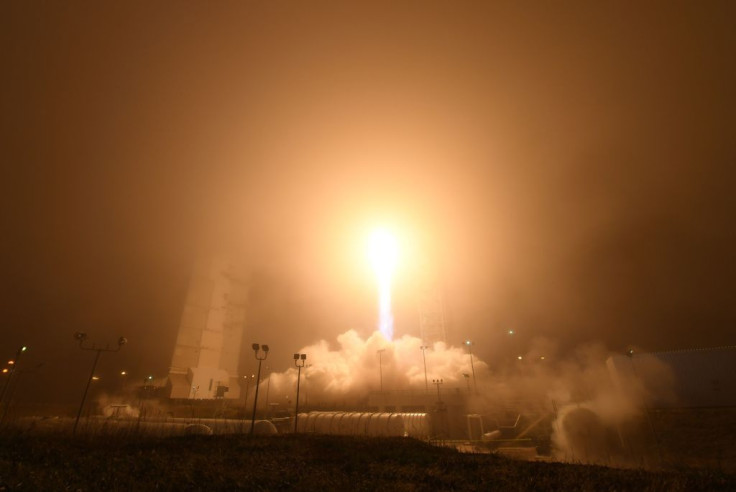NASA Mars Mission Could Bring This Unlikely Companion To The Red Planet

Man’s best friend will likely follow his master anywhere --even to Mars.
NASA recently released an artist’s perspective of the first Mars inhabitants from Earth, and it includes a dog dressed in his own spacesuit. This got some people speculating if the space agency plans to include a furry four-legged companion in its future journey to the Red Planet.
A new NASA poster suggests that a canine on Mars would be a valued companion on the journey to a distant land. But "it would probably be miserable," writes Marina Koren. https://t.co/IHOWrzPU7s
— The Atlantic (@TheAtlantic) March 18, 2019
NASA’s different illustrations show various scenes of humans making it to another surface apart from Earth. There’s a photo of an astronaut floating inside a lunar space station with the moon behind her. Another shows a lunar explorer that steadies a camera on a tripod to take a picture of Earth. And another image depicts an astronaut standing on the red Martian surface with a dog by her side.
According to The Atlantic, NASA’s current plans to once more travel to the moon and Mars do not include a canine companion. The agency recently shared that it aims to once more dominate the space industry by revealing plans to reach the moon and the Red Planet sometime in the year 2030. For this, they could be working on several private space groups who are part of the agency’s commercial space program.
Now, although there are no concrete plans or announcements about sending dogs to space, the idea does have merit. Various space agencies have been sending dogs to space from the 1950s to the 1960s as part of a general space study.
The Soviet Union, for example, trained a dog named Bobik to travel to space. However, days before the launch, the dog ran away so the Russian space agency had to snatch a stray dog from the street and send that instead. The dog named ZIB, a Russian acronym that means “substitute for the vanished Bobik,” went to space and got back to Earth safely.
Zib, however, only reached sub-orbital space. The first real dog to ever reach the outer regions is a dog named Laika. Laika was able to circle the Earth through space and stayed for five months. Laika did not survive the journey because the capsule ran out of oxygen after a week.
Now, the NASA illustration seemed to suggest that should a dog be included in the Mars mission, they won’t be test subjects anymore but companions. This is something that Clive Wynne, a psychology professor at Arizona State University who studies canine behavior, said wouldn’t work.
A Mars mission would most likely mean going to the Red Planet in a very cramped and uncomfortable capsule. It would be hard for astronauts to experience the space travel, much more for a creature that doesn’t understand what’s going on.
So a Mars mission with a canine companion is very unlikely for now. But once massive ships like the USS Enterprise gets built, then dogs might stand a chance to survive the journey. Until then, our furry friends can just continue enjoying the fields of Earth at the moment.
© Copyright IBTimes 2025. All rights reserved.





















